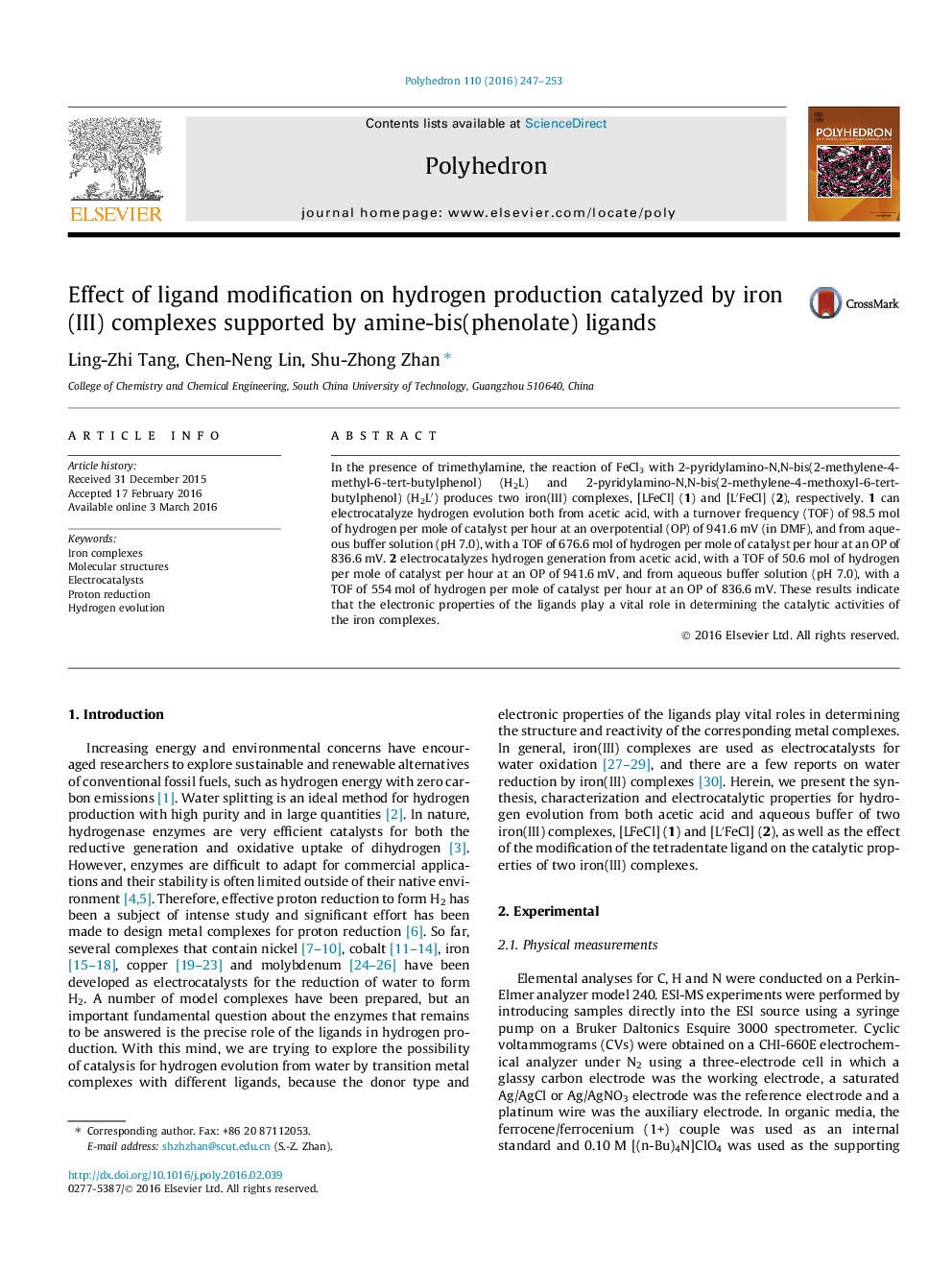| Article ID | Journal | Published Year | Pages | File Type |
|---|---|---|---|---|
| 1335614 | Polyhedron | 2016 | 7 Pages |
Abstract
In the presence of trimethylamine, the reaction of FeCl3 with 2-pyridylamino-N,N-bis(2-methylene-4-methyl-6-tert-butylphenol) (H2L) and 2-pyridylamino-N,N-bis(2-methylene-4-methoxyl-6-tert-butylphenol) (H2Lâ²) produces two iron(III) complexes, [LFeCl] (1) and [Lâ²FeCl] (2), respectively. Electrochemical studies show that the electronic properties of the ligands play a vital role in determining the catalytic activities of the iron complexes, and are consistent with an evident increase in the catalytic activity when a weakly activating electron donating group is present at the phenol para-position of the ligand; 2-pyridylamino-N,N-bis(2-methylene-4-methyl-6-tert-butylphenol) constitutes the better active catalyst for hydrogen generation.73
Related Topics
Physical Sciences and Engineering
Chemistry
Inorganic Chemistry
Authors
Ling-Zhi Tang, Chen-Neng Lin, Shu-Zhong Zhan,
